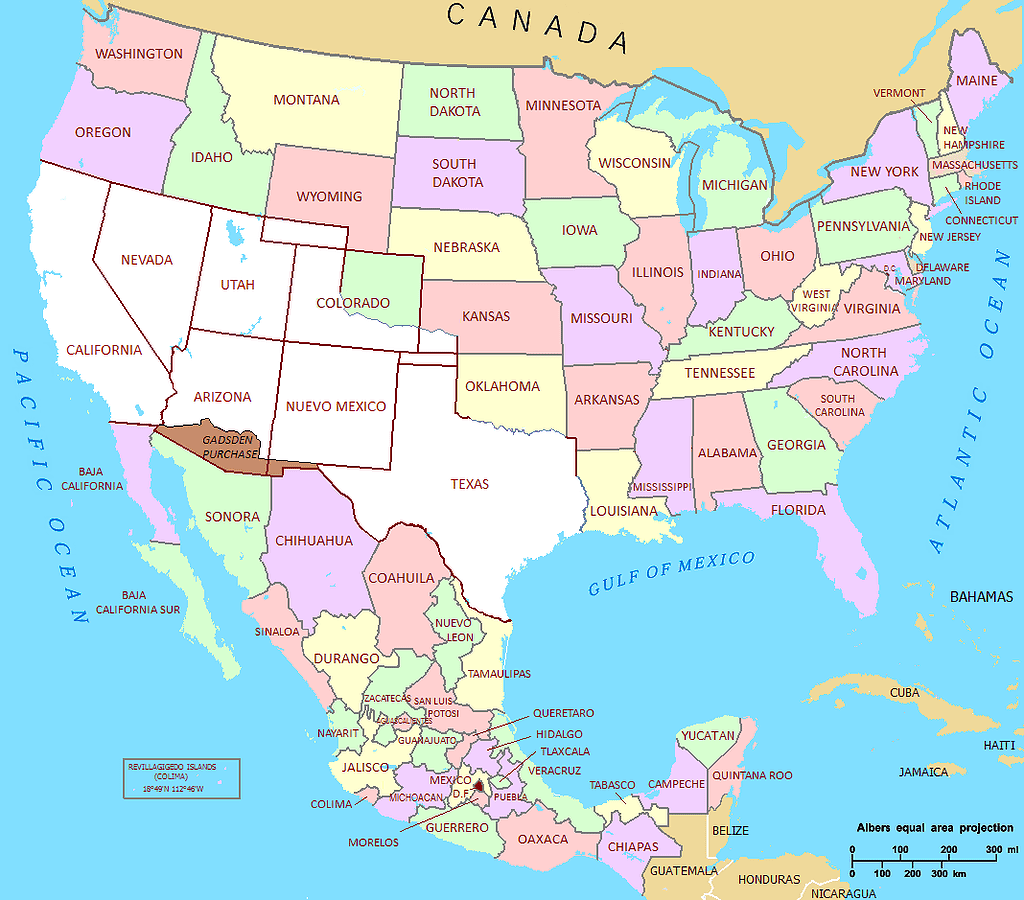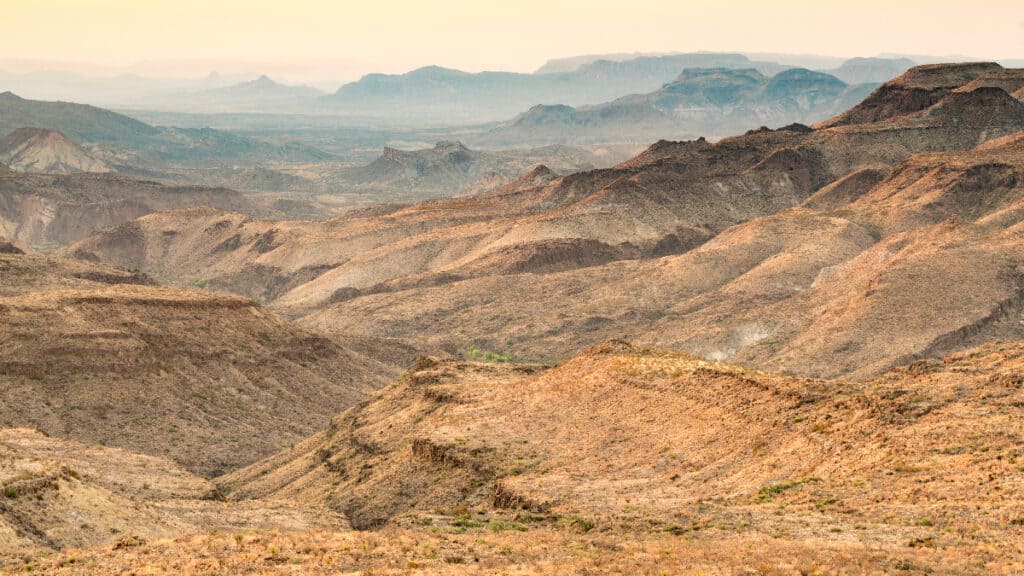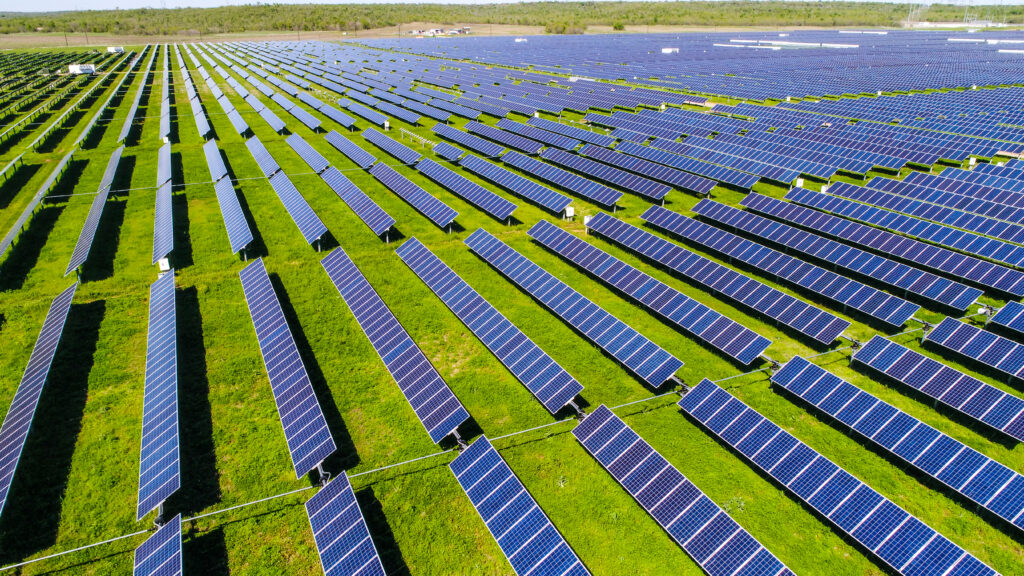Texas is the largest state by area in the contiguous United States and the second-largest overall, trailing only Alaska. It is also the second most populous state in the nation, behind California. The old axiom “everything is bigger in Texas” holds true in both geography and population. Here is a look at the location of this big state, which states share a border with the Lone Star State, and much more.
Where Is Texas Located on a Map?
Texas lies in the South Central Region of the United States. Florida is the only state in the contiguous U.S. that reaches further south than Texas. (Hawaii is the southernmost state in the nation as a whole.) Austin is the southernmost capital city in the 48 contiguous states. San Antonio is the southernmost city of more than 1,000,000 residents in the nation.
Which States Border Texas?
Texas shares a border with four other states: New Mexico to the west, Oklahoma to the north, Arkansas to the northeast, and Louisiana to the east. The state features 367 miles (591 kilometers) of coastline along the Gulf of Mexico to the southeast.
Texas’s southern/southwestern border is an international boundary that the state shares with Mexico. Texas borders the Mexican states of Chihuahua, Coahuila, Nuevo León, and Tamaulipas.
The U.S.-Mexico border is the busiest international boundary in the world, with over 350 million documented crossings each year. It is the tenth-longest border between two countries in the world, stretching for 1,954 miles (3,145 kilometers) from the Pacific Ocean to the Gulf of Mexico. The Texas-Mexico border accounts for about half of the entire boundary between the two nations.
When Did Texas Officially Join the U.S.?
The journey to statehood was a long and violent one.
U.S. Secretary of State John Quincy Adams and Spanish Envoy Lord Don Luis de Onís signed the Adams-Onís Treaty in 1819. The signing of this treaty established the boundaries between American and Spanish territories. This treaty established the northern borders of the modern U.S. states of California, Nevada, and Utah.
In 1821, Mexico achieved independence from Spain. The nation claimed sovereignty over much of the land that now makes up the western United States. President Andrew Jackson attempted to buy Texas from Mexico in 1829 for five million dollars, an offer that Mexico flatly refused.
The Republic of Texas
Seven years after Jackson’s failed purchase attempt, Texas declared itself to be a sovereign nation on March 2, 1836. The United States officially recognized the Republic of Texas the following year.
The Republic of Texas claimed that its southern border extended to the Rio Grande, a claim that Mexico vehemently rejected. Furthermore, Mexico categorically refused to recognize any notion of Texas’ independence whatsoever.

The Republic of Texas assumed lands that Mexico claimed as its sovereign territory.
©Raymond1922A / CC BY-SA 3.0 – License
Annexation
The United States annexed Texas nine years after it declared itself an independent republic. President James K. Polk signed the annexation bill into law on December 27, 1845, making Texas the 28th state admitted to the Union.
The Mexican-American War
The United States continued the claim that the Rio Grande marked the Texas-Mexico border. Mexico claimed the border was formed by the Nueces River, some 150 miles (241 kilometers) further north. This was a primary contention that led to the Mexican War, or the Mexican-American War, which lasted from 1846-1848.
The United States prevailed, but not without great cost and loss of life. An estimated 25,000 Mexican soldiers died in the conflict. The U.S. lost over 12,500 troops (exact figures are not known). However, 88% of U.S. deaths were attributed to disease and not the result of armed conflict. It is estimated that nearly 11,000 U.S. soldiers died from dysentery and other diseases due to the unsanitary conditions of military camps.
The war ended when the Treaty of Guadalupe Hidalgo was signed on February 2, 1848. Mexico ceded 55% of its territory to the United States, including the release of all claims to the state of Texas. For the first time, Mexico officially recognized the Rio Grande as the boundary with the U.S.
Texas is known as the Lone Star State, and it features one star on its state flag. This is a reminder of its days as an independent republic.
The statehood of Texas was hard-fought and controversial. While the war was supported overwhelmingly by Democrats, many Whigs considered it an unprincipled land grab. And it would not be long until another war involving the fate of Texas would be fought: the American Civil War.

Mexico ceded over half of its territory in the Treaty of Guadalupe Hidalgo, seen in white on this map.
©United States federal government (en:User:Black and White converted it from JPEG to PNG and retouched it) / Public domain – License
Secession
Texas declared its secession from the Union on February 1, 1861. It officially joined the Confederacy on March 2, 1861, twenty-five years to the day after it declared its independence from Spain. Texas became the seventh state to join the Confederacy. More than 70,000 Texans fought for the Confederate army. The state’s troops were involved in every major battle of the war.
The Civil War ended with Robert E. Lee’s surrender to Ulysses S. Grant on April 9, 1865, at Appomattox Court House in Virginia. However, skirmishes continued until the final battle of the war took place in Palmito Ranch, Texas, on May 13, 1865.
Readmission
It would be another five years before Texas was fully readmitted into the Union. The United States Congress passed the measure for its reinstatement on March 30, 1870. The state was the second to last of the Confederate states to be readmitted to the Union. Only Georgia was readmitted after Texas. Georgia’s readmission came four months later, on July 15, 1870.
What Is the Climate in Texas?
Texas is often associated with the deserts of the U.S. Southwest, but less than ten percent of the state’s land is actually desert. The arid climate of the west gives way to a much more humid climate in the east. Interstate 35 acts as an unofficial dividing point between the arid and humid regions of the state.

West Texas is the most arid part of the state.
©jesmo5/Shutterstock.com
Texas is the fourth sunniest state in the nation. The Lone Star State only trails Nevada, New Mexico, and Arizona in terms of the number of sunny days each year.
The rainiest place in the state is the small town of Winnie on the Gulf Coast. Winnie receives nearly 60 inches of rain each year.
Generally speaking, annual precipitation totals decrease by about an inch for every fifteen miles traveled from east to west in Texas. The Trans-Pecos is the driest region of the state, averaging just over eleven inches of rain per year.
El Paso, in the extreme western part of the state, features an average high temperature of 98°F in July (the warmest month of the year) and 59°F in January (the coldest month).
Houston in eastern Texas features average high temperatures of 91°F in July and 60°F in January.
In the northern reaches of the state, Amarillo sees average highs of 92°F in July and 50°F in January.
Is Texas a Good Place to Live?
With a 2022 estimated population of 30,029,572, the second-highest in the nation, it’s easy to see that a whole lot of people believe the Lone Star State is a good place to live.
Cities
If you like big-city life, Texas has you covered. Four of the ten most populous cities in the U.S. are found in Texas: Houston (4), San Antonio (7), Dallas (9), and Austin (10).

Houston is the largest city in Texas and the fourth-largest in the U.S.
©Silvio Ligutti/Shutterstock.com
Taxes
Texas is one of only nine states with no income tax. The state has the fifth-lowest tax burden per capita of any state in the country. However, while there is no income tax, Texas has some of the nation’s highest property taxes, so it’s not all great news for taxpayers. U.S. News and World Report ranked Texas in the bottom third of states for affordable cost of living.
Weather
If you like it hot, as noted above in the climate discussion, then Texas is for you. Winters are generally mild, and summers can be scorching. Texas also has more tornadoes each year than any other state. An average of 135 tornadoes hit the Lone Star State annually, although that figure is a bit skewed due to the enormity of the state. At 268,596 square miles (695,660 square kilometers), Texas is bigger than the next four most tornado-prone states (Kansas, Oklahoma, Alabama, and Mississippi) combined. More land area means more space and more opportunities for tornadoes to touch down.
Economy
The Texas economy is robust, to say the least. Texas is home to more Fortune 500 company headquarters (53) than any other state. Along with those massive companies, Texas is also home to over three million small businesses. The state has the fourth-highest rate of new entrepreneurs in the United States. If Texas were an independent country, it would have the ninth-largest economy in the world.
What Is Texas Most Known For?
Size
More than anything, Texas is known for its size. It is the largest state in the contiguous U.S. and is over 100,000 square miles larger than the next biggest state (California).
Cowboys
Texas is famous for its cowboy culture. Cattle ranching has always been central to the Texas economy and way of life. Rodeos are a long-standing Texas tradition, including the Houston Livestock Show and Rodeo, the biggest rodeo and livestock exhibition in the world.

Texas is famous for its cowboys, and not just the football team.
©iStock.com/Oduvanchik21
Food
Texas barbecue and Tex-Mex dominate the food scene in Texas. If you like spicy foods, then Texas is for you!
Football
Texans’ devotion to their football teams is legendary, especially the Dallas Cowboys. In 2022, Forbes recognized the Cowboys as the most valuable sports franchise in the world, with an estimated worth of $8 billion. The Houston Texans, the state’s other NFL team, was also ranked in the top twenty most valuable sports franchises in the world with an estimated worth of $4.7 billion.
Resources
Texas’ natural resources are known the world over. The state produces more than 40% of America’s oil and nearly 25% of the nation’s natural gas. It is also the top-producing state for wind energy and the second-largest state for solar (it is, after all, the fourth-sunniest state in the U.S.).

Texas solar farms like this one are becoming common sights in the state.
©Roschetzky Photography/Shutterstock.com
NASA
NASA’s Lyndon B. Johnson Space Center has been in Houston for over 50 years. It has become synonymous with the state’s largest city. If you’ve ever heard or said the phrase, “Houston, we have a problem,” the famous line from the Apollo 13 mission, then you know just how intertwined Houston and NASA truly are. Fun fact: The communication from the Apollo 13 astronauts was actually, “Okay, Houston…we’ve had a problem here.” The line was changed to its more famous form for the Apollo 13 movie in 1995.
So Much More!
There is so much more than can be listed here. Texas is a huge, diverse, and prolific state that, in many ways, defies categorization.
The photo featured at the top of this post is © Alexander Lukatskiy/Shutterstock.com
Thank you for reading! Have some feedback for us? Contact the AZ Animals editorial team.







